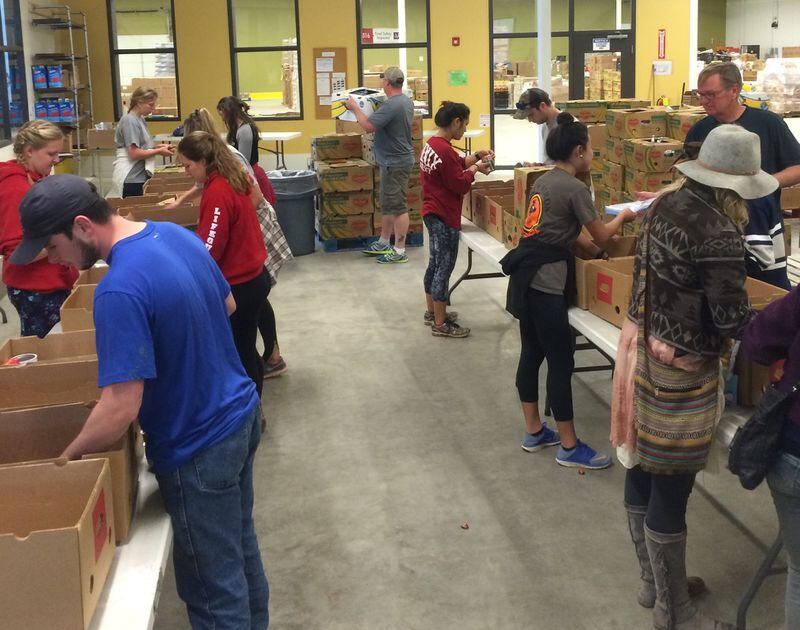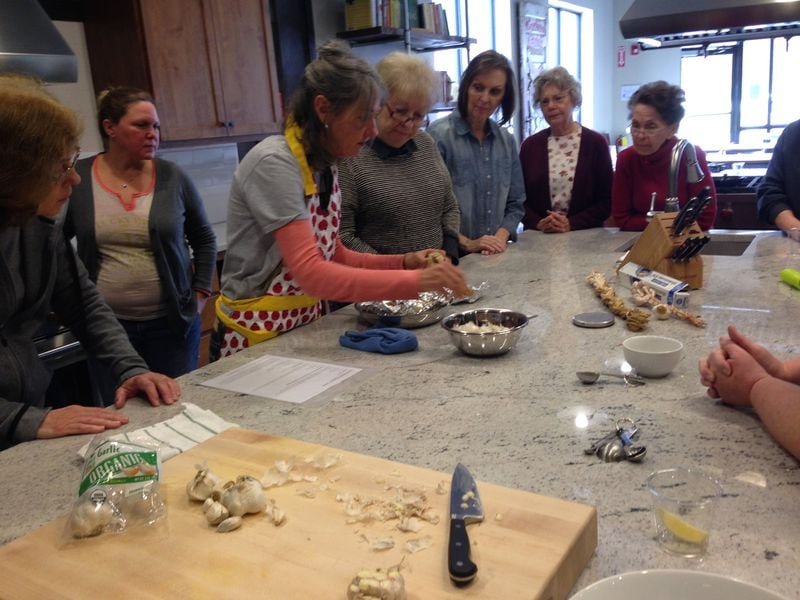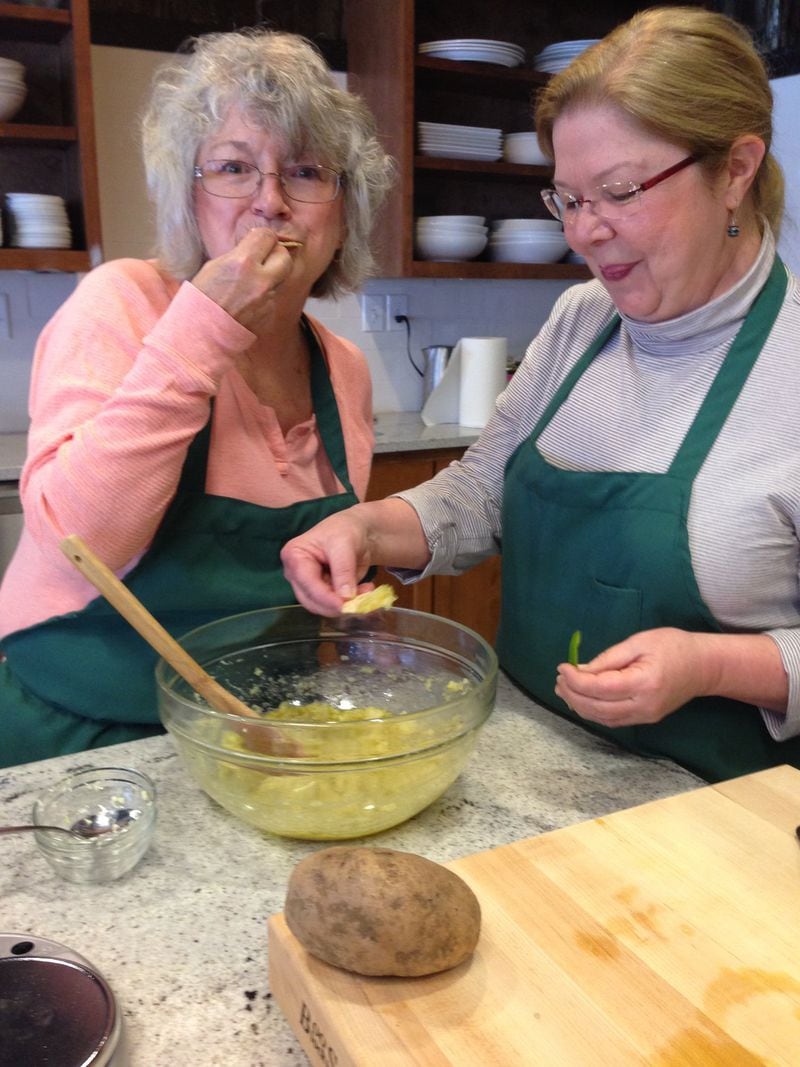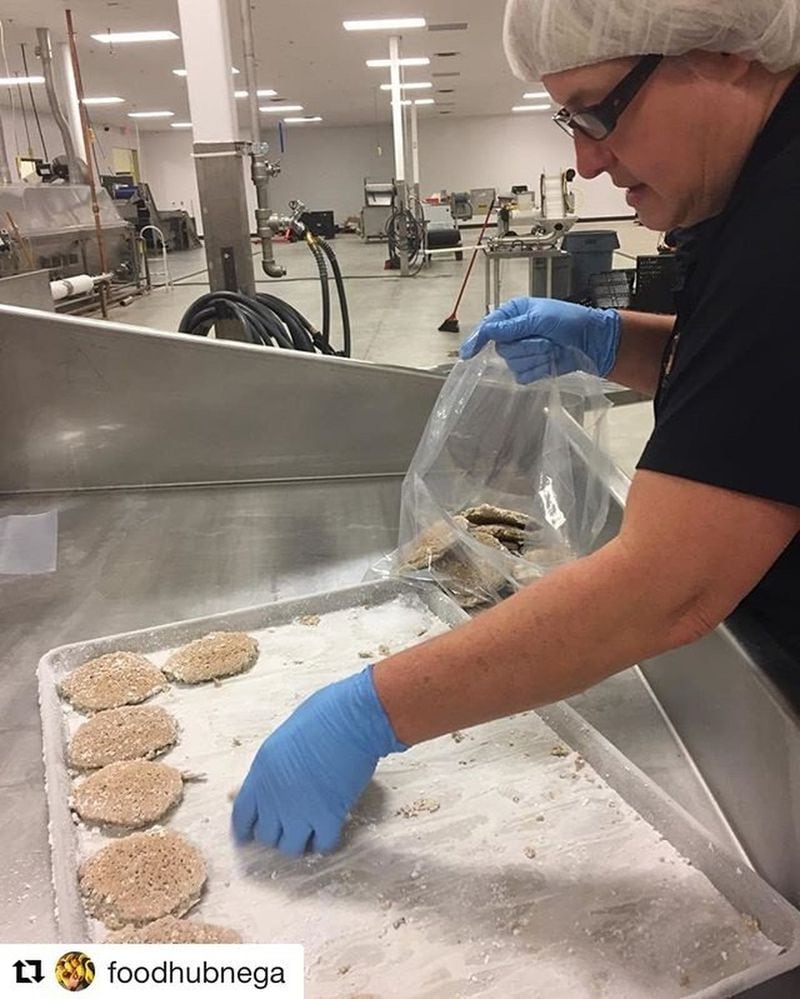A farmer delivers 60,000 pounds of fresh carrots. Volunteers sort donated food. A local church picks up food for its pantry. A dozen women gather to meet a local farmer, hear what she’s growing at her nearby farm and learn a few new, healthy recipes.
It’s a typical day in the regional branch of the Food Bank of Northeast Georgia.
Based in the city of Clayton, seat of Rabun County, the branch serves those living in five counties in the northeast Georgia mountains and provides frozen produce to food banks and schools across the Southeast. Along with the main office of the food bank in Athens, the branch is an example of the new model of food bank as “food hub.”
“The Food Bank of Northeast Georgia is on the leading edge of food bank operations,” said Danah C. Craft, executive director of the Georgia Food Bank Association. “They’re bringing the community into the food bank and reconnecting them to the basics of food preparation and healthy eating.”
Craft said the fastest-growing source of food for local food banks these days is fresh produce, and that’s generated the need for food banks to develop programs like those in the Clayton branch.
Forget any vision of food banks being dark and cavernous warehouse space in some out-of-the-way industrial park. Since December 2015, this food bank has been on Highway 441, Clayton’s main drag, anchoring the shopping center it owns.
The shopping center has traditional stores, such as Little Caesars and Dollar General. But in the 34,000 square feet where a Bi-Lo once catered to grocery shoppers, the food bank now houses:
• a commercial kitchen (in the final construction phase)
• an IQF line (more about that in a minute)
• a bright and colorful warehouse filled with pallets of purchased and donated food
• freezer space large enough to fit three tractor-trailer loads
• a “grocery store” where partner agencies can pick up food
• a Teaching Kitchen in a facility rivaling any you’ll find in metro Atlanta.
And come summer there will be a farmers market in the parking lot.
When someone donates a 50-foot homegrown row of collards, it’s generally easy enough to get the collards into the hands of those who can use it. But to make the best use of quantities of fresh produce like that 60,000-pound load of carrots, the food bank built an IQF (Individually Quick Frozen) facility. Six staffers operate a line of equipment that takes in fresh produce at one end, washes and peels it, cuts it into pieces and pours out quick frozen product at the other end. Bags go into the freezer, available for partner agencies and other partners.
The Teaching Kitchen opened last summer. Cara-Lee Langston, the kitchen’s coordinator, manages a class schedule that includes training for school nutrition staff, chef demos and basic cooking classes.
On a recent Friday afternoon, volunteers Gloria Stokes and Annette Branan of Clayton were in the kitchen mashing potatoes to make skordalia, a Greek potato and garlic dip. Terri Jagger Blincoe of Ladybug Farms in Persimmon Valley was hosting her monthly Farm Food Favorites class, this time talking about growing garlic. She offered samples of roasted garlic while Langston shared information on its nutritional benefits and the class polished their knife skills mincing heads of fresh garlic and sauteing the bits in olive oil, coconut oil or butter.
Rabun Gap resident Barbara McCarty signed up for the class because she was intrigued by the idea that it was taught by a farmer. Others such as Sandra Adams are new to the area and as pleased with the tips for growing garlic as by the chance to try the different oils for sauteing garlic.
“It really inspires me when the students in the class want to grow more of their own food. We’re making a difference in diets and eating habits and people’s relationship to food,” said Blincoe. She believes this kind of food hub was sorely needed in the community.
Tammy Whitmire of Rabun Gap was at the teaching kitchen’s very first class and has made it to almost every class since. “I’m a good Southern girl, and the only way we knew how to eat vegetables was fried. My idea of vegetables was potatoes and corn! I had never eaten one Asian vegetable, and squash meant yellow squash.”
Now she loves learning about new vegetables such as winter squash and simple ways to prepare them. Being able to sample what she’s cooking means she’s more likely to try it at home. Since changing her cooking habits, she has lost 84 pounds. The bonus is she’s found everything tastes good and her husband will eat it. “He went from everything fried to, ‘Oh, this is really pretty good.’”
For Langston, with her master’s in nutrition and integrative health, the class is just one of many ways to connect people with fresh, seasonal, local food and with cooking, a skill many have lost. “Many of our classes are popular because they meet people where they are.”
» RELATED: More food banks on college campuses
» AJC SPECIAL REPORT: Atlanta’s food deserts
She’s been teaching Share Our Strength’s Cooking Matters classes for partner agencies such as Pilgrim Ministries, an agency that helps men get back on track in life. Much of the food the agency serves comes from the pantry of the food bank.
“Instead of just heating up pizzas and Hot Pockets, Cara-Lee helped the guys understand what goes into preparing a meal, how to eat on a budget and how to eat nutritious food. All guys like meat and potatoes, but she made us throw some greens and yellows and oranges in there,” said Shane Pauley of Pilgrim Ministries.
“Our guys eat three meals a day with us and mama’s not here. They have to provide for themselves. And it’s not like what they see on TV. She showed us how we can cook in a real house setting.”
» MORE: Georgia teen crusades to end childhood hunger
» RELATED: Too many Georgia seniors are going hungry
Establishing the regional branch of the Food Bank of Northeast Georgia was a result of the community’s desire to help those struggling from the bad economic times that hit bottom in 2008. “That year my husband reached out to the Athens food bank and they provided funds to pay for 6,000 pounds of food, then 12,000, then 18,000, then 24,000 pounds. In 2008 we distributed about 250,000 pounds of food. In 2016 it was close to 3 million pounds,” said Lynn Pattillo, whose family foundation was instrumental in creating the regional branch.
She’s excited about the coming commercial kitchen that will provide a place for entrepreneurs to produce their products, about the IQF line that not only helps solve a problem of what to do with large amounts of produce but creates jobs in the community and reduces waste, and about the teaching kitchen that generates revenue through rental of the space as well as teaching the community how to eat healthy meals.
She sees what’s happening in Clayton as the next step in the evolution of food banks. “Food banks can do more than distribute food. They can be the centerpiece of the community to tackle a number of issues.”
HUNGER IN GEORGIA:
• 1 in 5 Georgians don’t always know where they will find their next meal
• 1 in 3 households in the northeast Georgia mountains don’t know where they will find their next meal
• 80 percent of the northeast Georgia mountain community lives below the poverty line
Facts about the Clayton regional branch of the Food Bank of Northeast Georgia — Calendar Year 2016
• More than 60 agencies served (includes soup kitchens, food pantries, senior centers, churches and other hunger relief organizations)
• 2,204,146 pounds of food distributed
• Saved $3.5 million in food costs for partner agencies
• Provided food for 35,000 meals each week
• 33,680 weekend food bags (non-perishable items) provided for children during the school year
• 5,902 hours of service provided by community volunteers
• 3.79 percent of overall budget goes to administrative and fundraising costs
SOURCE: Food Bank of Northeast Georgia regional branch
About the Author










